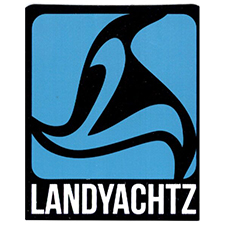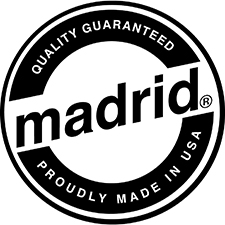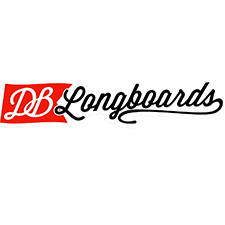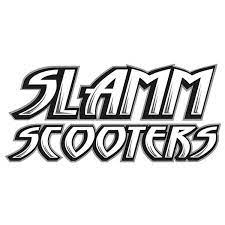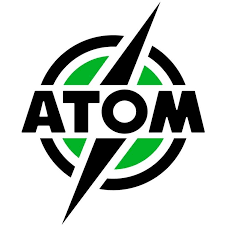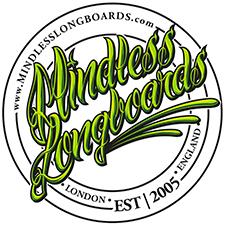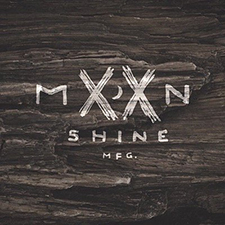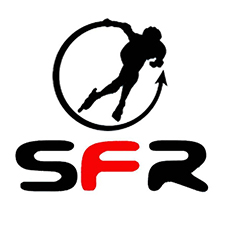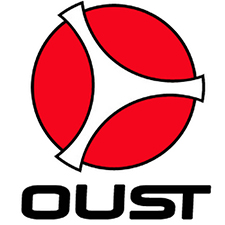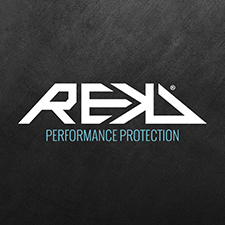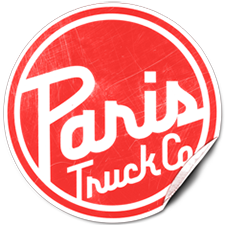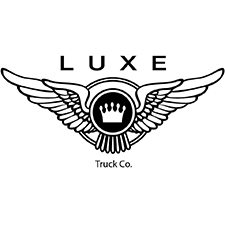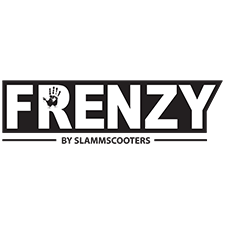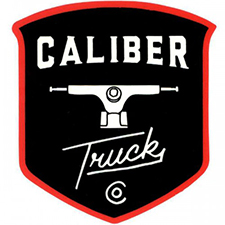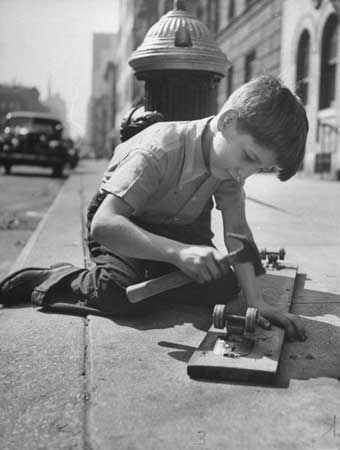
The first skateboards started with wooden boxes, or boards, with roller skate wheels attached to the bottom. Crate scooters preceded skateboards, having a wooden crate attached to the nose (front of the board), which formed rudimentary handlebars.The boxes turned into planks, similar to the skateboard decks of today.
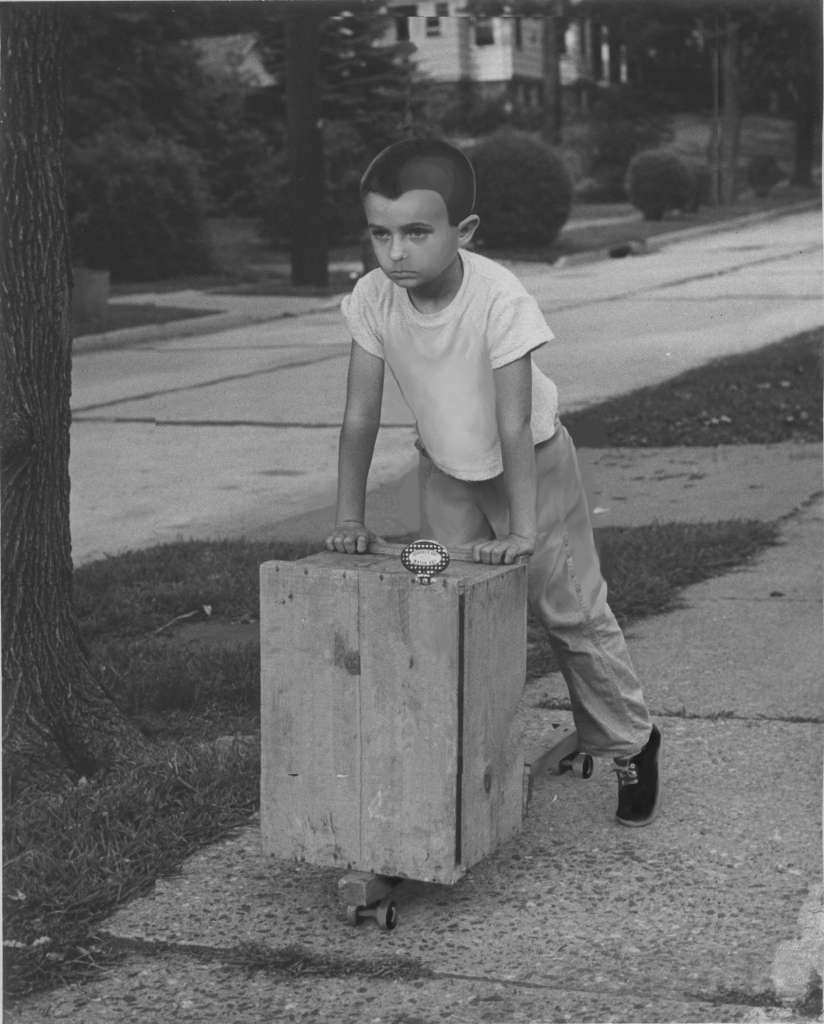
Skateboarding, as we know it, was probably born sometime in the late 1940s, or early 1950s, when surfers in California wanted something to do when the waves were flat. This was called "sidewalk surfing".
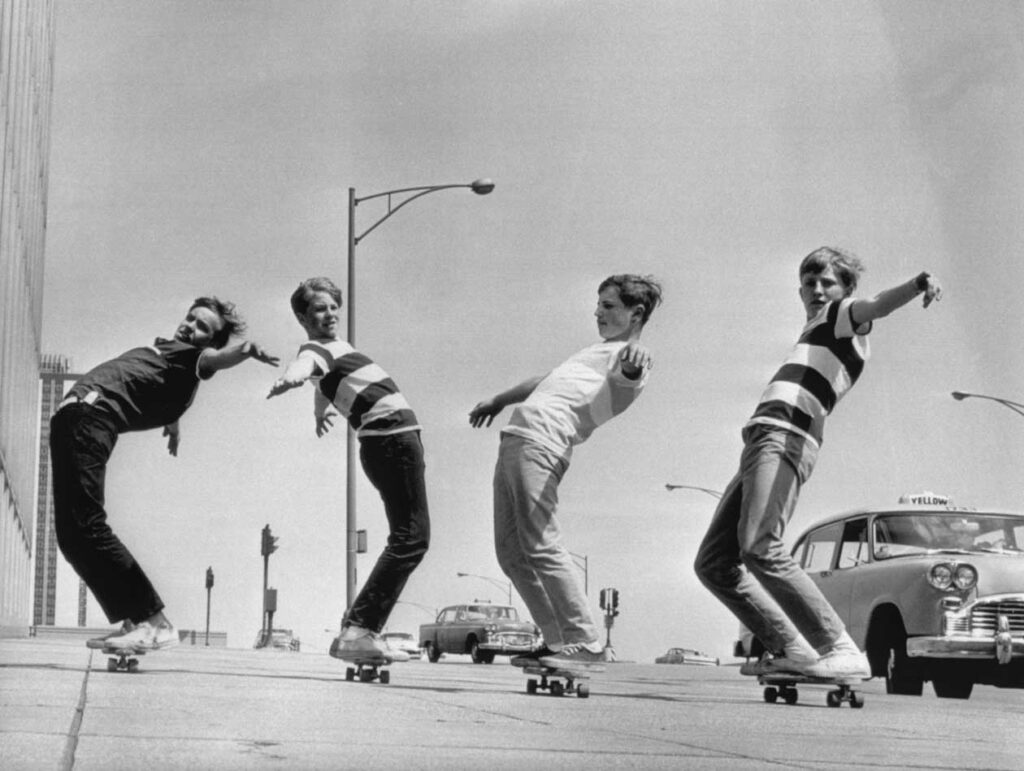
No one knows who made the first board; it seems that several people came up with similar ideas at around the same time. The first manufactured skateboards were ordered by a California surf shop, meant to be used by surfers in their downtime. The shop owner, Bill Richard, made a deal with the Chicago Roller Skate Company to produce sets of skate wheels, which they attached to square wooden boards. Early skaters emulated surfing style and maneuvers, and performed barefoot.
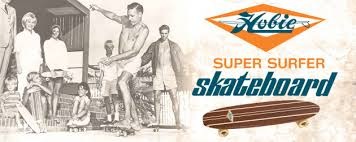
By the 1960s a small number of surfing manufacturers in Southern California such as Jack's, Kips', Hobie, Bing's and Makaha started building skateboards that resembled small surfboards, and assembled teams to promote their products. The first TV commercial appeared on a television show called "Surf's Up" in 1964.
As the popularity of skateboarding began expanding, the first skateboarding magazine, The Quarterly Skateboarder was published in 1964. The Quarterly SkateboarderJohn Severson, who published the magazine, wrote in his first editorial: Today's skateboarders are founders in this sport—they're pioneers—they are the first. There is no history in Skateboarding—its being made now—by you.
The first broadcast of an actual skateboarding competition was the 1965 National Skateboarding Championships, which were held in Anaheim, California and aired on ABC's Wide World of Sports. Because skateboarding was a new sport during this time, there were only two original disciplines during competitions: flatland freestyle and slalom downhill racing.

One of the earliest sponsored skateboarders, Patti McGee, was paid by Hobie and Vita Pak to travel around the country to do skateboarding exhibitions and to demonstrate skateboarding safety tips. McGee made the cover of Life magazine. Life This helped make skateboarding even more popular at the time. Some other well known surfer-style skateboarders of the time were Danny Bearer, Torger Johnson, Bruce Logan, Bill and Mark Richards, Woody Woodward, & Jim Fitzpatrick.

By 1966 a variety of sources began to claim that skateboarding was dangerous, resulting in shops being reluctant to sell them, and parents being reluctant to buy them.
The popularity of skateboarding dropped and remained low until the early 1970s, when Frank Nasworthy started to develop a skateboard wheel made of polyurethane, calling his company Cadillac Wheels.
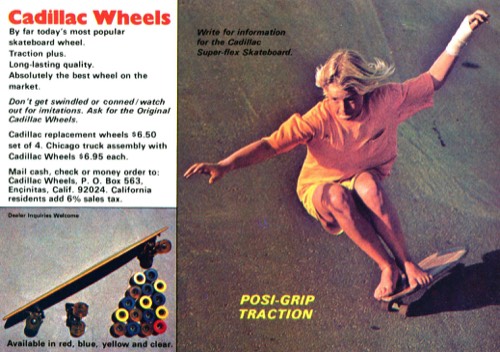
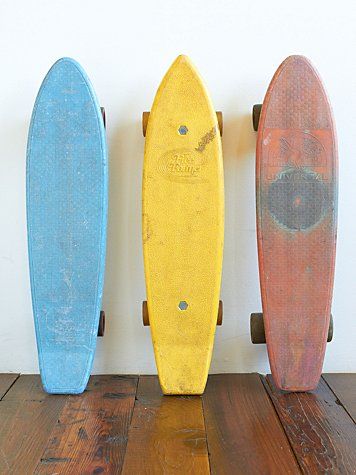
Prior to this new material, skateboards wheels were metal or "clay" wheels. The improvement in traction and performance was so immense that from the wheel's release in 1972 the popularity of skateboarding started to rise rapidly again. Many companies also started to manufacture trucks (axles) specially designed for skateboarding.
A banana board is a skinny, flexible skateboard made of polypropylene with ribs on the underside for structural support. banana board These were very popular during the mid-1970s and were available in a myriad of colors, bright yellow probably being the most memorable, hence the name.
One of the best-known skate teams of the mid-70s, the Zephyr team (Z-Boys) from Santa Monica, ushered in a new era of surfer style skateboarding in 1975 that would have a lasting impact on skateboarding's history. Their progressive style can be considered the basis of modern time freestyle.

In 1976, two skateparks were opened in Florida and California. They were the first of some 200 skateparks that would be built through 1982.
The skateboarders took advantage of the improved handling of their skateboards and started inventing new tricks. Skateboarders, most notably Ty Page, Bruce Logan, Bobby Piercy, Kevin Reed, and the Z-Boys started to skate the vertical walls of swimming pools that were left empty in the 1976 California drought. This started the "vert" trend in skateboarding. With increased control, vert skaters could skate faster and perform more dangerous tricks, such as slash grinds and frontside/backside airs. As a result of the "vert" skating movement, skate parks had to contend with high liability costs that led to many park closures. In response, vert skaters started making their own ramps, while freestyle skaters continued to evolve their flatland style.
Since few skateparks were available to skaters in the 1980s, street skating pushed skaters to seek out shopping centers and public and private property as their "spot" to skate. During this period, numerous skateboarders - as well as companies in the industry - paid tribute to the scenes of Marty McFly skateboarding in the film Back to the Future for its influence in this regard. Push (1985).
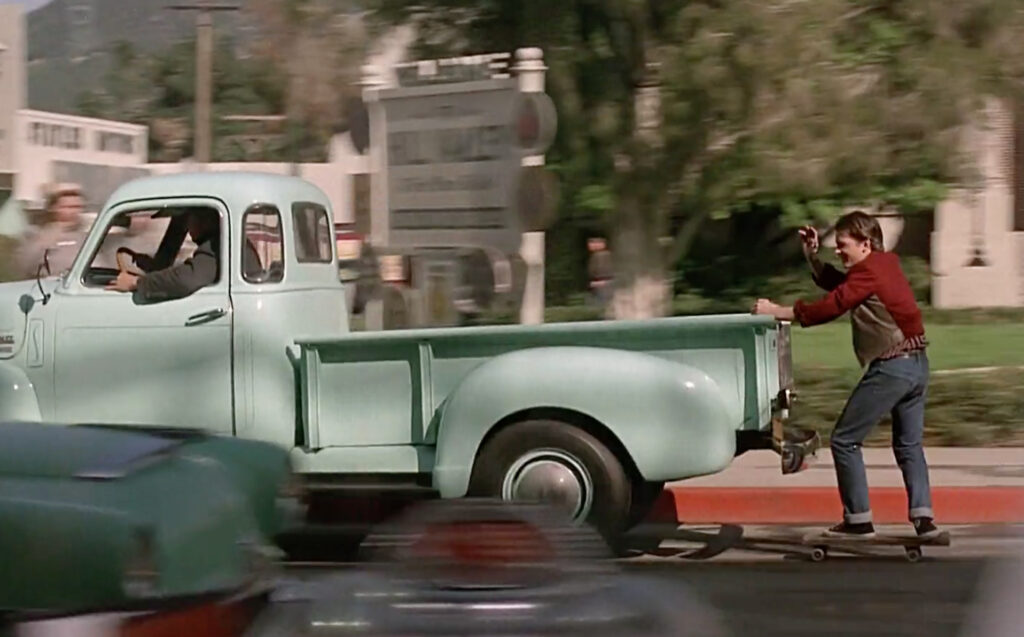
It was also during this time that a distinctive youth subculture began to develop around the sport. Punk rock and baggy clothes became closely associated with young skaters.
Sources: Wikipedia, Skatedelux, Britannica



































